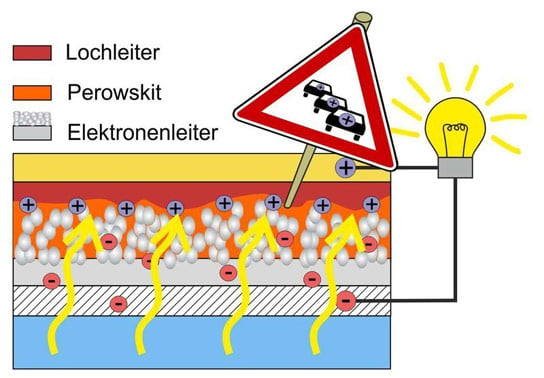
Traffic jam in the solar cell: In a perovskite solar cell, the perovskite layer itself (orange) is located between a porous layer of titanium oxide (grey) which channels the electrons to the upper electrode (yellow). The Mainz-based Max Planck researchers established that the positively charged holes accumulate in the perovskite layer. Credit: MPI for Polymer Research
New insights into the working mechanism of perovskite-based solar cells could help these solar cells play a prominent role among the renewable energy carriers in future.
Conventional silicon solar cells could have an inexpensive competitor in the near future. Researchers from the Max Planck Institute for Polymer Research in Mainz, together with scientists from Switzerland and Spain, have examined the working principle of an innovative type of solar cell, where an organic-inorganic perovskite compound acts as the light absorber. The scientists observed that charge carriers accumulate in a certain layer in these photovoltaic elements. If this jam can be dissolved, the already considerable efficiency of these solar cells could be further improved. Perovskite-based solar cells could play a prominent role among renewable energy carriers in the future. Unlike the established silicon solar cells, which are costly and energy-intensive to manufacture, these cells are made of cheap materials and are simple to produce.
Renewable energies are an essential element of the energy turnaround – however, their use must be worthwhile. Particularly in less sunny countries like Germany, this is often not the case with solar cells. Perovskite solar cells, which have been investigated for some years now, could soon change this, if their efficiency can be further improved. This task is the focus of a research team headed by Rüdiger Berger at the Max Planck Institute for Polymer Research in Mainz.
Perovskite solar cells generate electricity with the help of a layer consisting of an organic-inorganic compound which crystallizes in a perovskite structure. The ions in this structure form a cubic arrangement, i.e. a rectangular lattice. “Perovskite materials absorb light extremely well,” says Rüdiger Berger, explaining how the solar cell works. “The light absorbed by the perovskite layer snatches an electron from an atom creating a positively-charged electron vacancy, which we also refer to as a ‘hole’. Then all we have to do is channel the electrons to one electrode and the holes to another one – and electricity is produced.”
Holes do not reach their electrodes as fast as electrons
In the solar cell, the perovskite structure rests on a porous layer of titanium oxide which collects the electrons generated under illumination and transports them to the lower electrode. Above the perovskite there is a layer consisting of the organic hole conductor Spiro-OMeTAD, which transports the holes to the upper electrode. “The many different layers in the solar cell are extremely important. They ensure the effective separation of the two charge carriers,” says Rüdiger Berger’s colleague Stefan Weber. ”However, the charge carriers have to overcome a small barrier every time they jump from one material to the other. These barriers act like a construction site on a busy freeway where the vehicles clog. This charge transport jamming in the solar cell leads to losses and thus to a lower efficiency.”
In several test series, the researchers found that a strong accumulation of positive charges takes place in the perovskite layer upon exposure to light. They suppose that the reason for this positive charging is that the titanium dioxide electron conductor works much more effectively than the hole conductor. The holes do not reach their electrode as fast as the electrons and accumulate on the way. The excess of positive charges in the perovskite layer then generates an opposing electric field which slows down the charge transport even further.
A more effective hole conductor could increase the efficiency of the solar cell
To observe the charge transport within the solar cell, the Mainz-based researchers cleaved the cell in the middle and polished the broken surface until it was smooth using a finely focused ion beam. With the help of Kelvin probe force microscopy, they mapped the electrical potential in each layer of the solar cell. From this potential map, the researchers could derive the field distribution and thus the charge transport through the different layers of the cell.
“We could for the first time correlate the charge distribution with the individual material layers in the cell”, says Rüdiger Berger. “The charge transport jamming of positive charges in the illuminated perovskite layer tells us that the transport through the hole conductor currently constitutes the bottleneck for the efficiency of the solar cell” If a more effective hole conductor could be used, the efficiency of the perovskite solar cells could be increased well above the 20% mark and thus offer a genuine alternative to the conventional silicon solar cells.
Reference: “Real-space observation of unbalanced charge distribution inside a perovskite-sensitized solar cell” by Victor W. Bergmann, Stefan A. L. Weber, F. Javier Ramos, Mohammad Khaja Nazeeruddin, Michael Grätzel, Dan Li, Anna L. Domanski, Ingo Lieberwirth, Shahzada Ahmad and Rüdiger Berger, 22 September 2014, Nature Communications.
DOI: 10.1038/ncomms6001


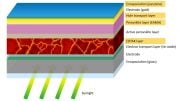


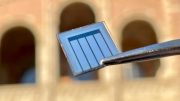
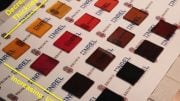
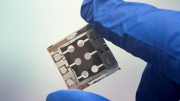

Be the first to comment on "Researchers Investigated the Charge Transport Perovskite Solar Cells"